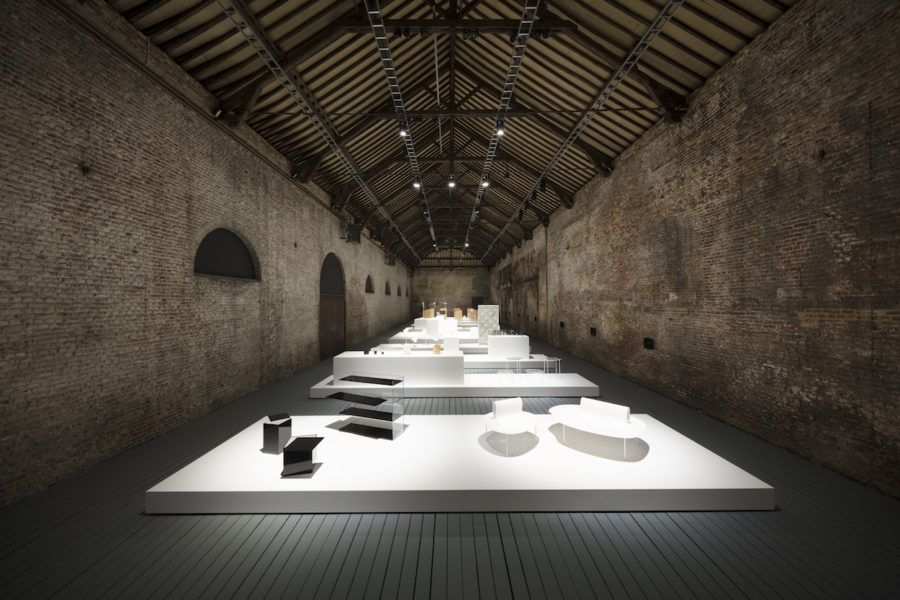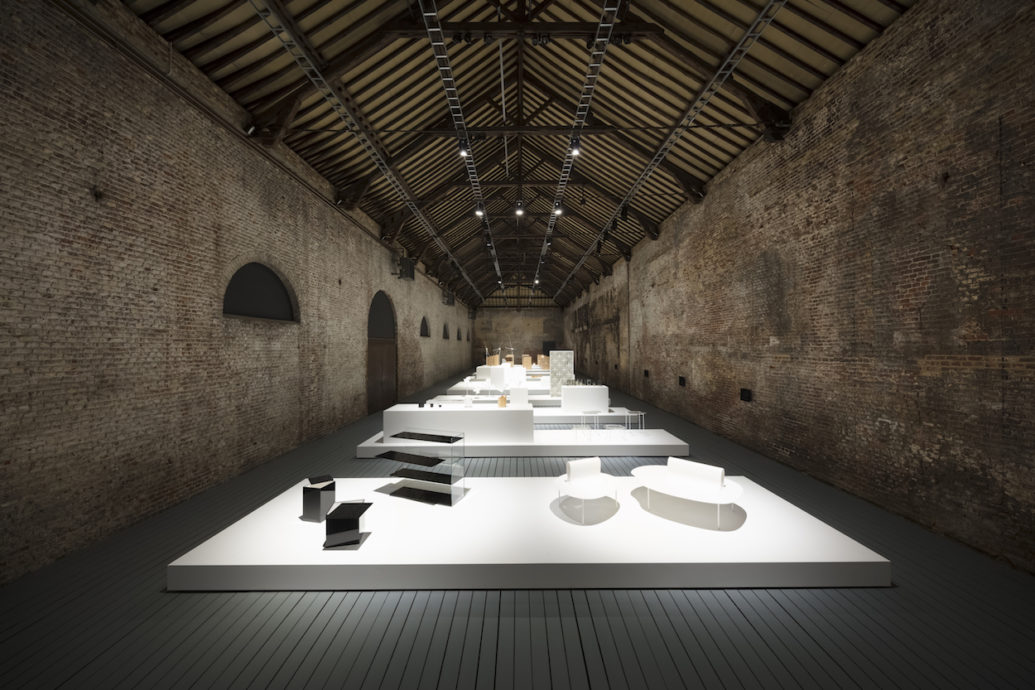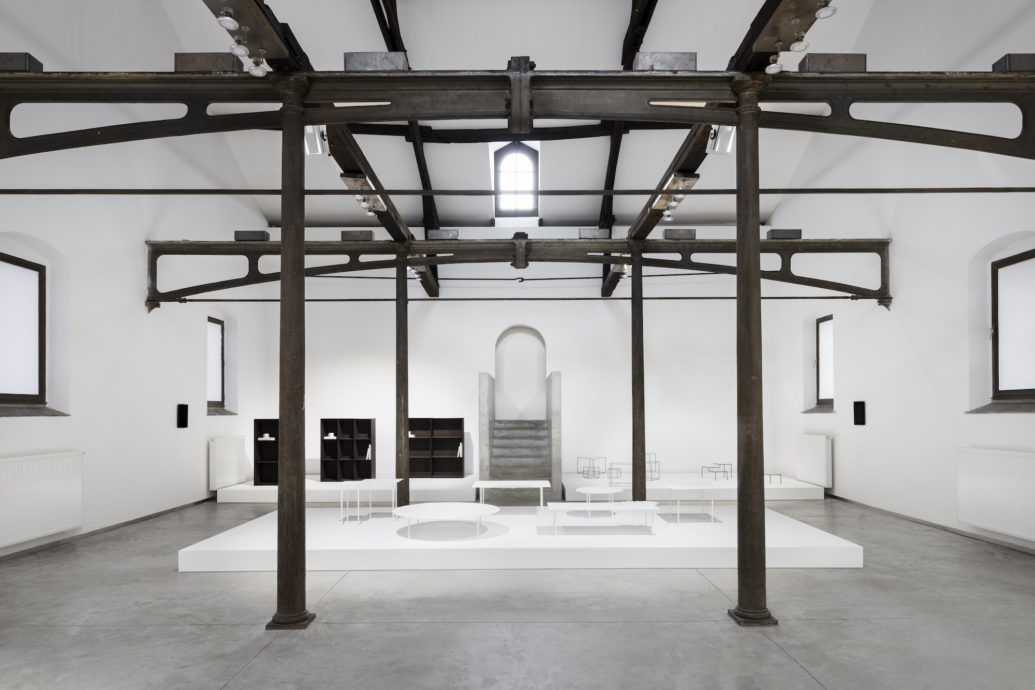Before Oki Sato founded his prolific design studio Nendo, he studied architecture at Tokyo’s Waseda University. There, Sato learned that good design contains a narrative, and that objects should respond to their environment. “I think my design process or philosophy was hugely influenced by my architecture studies,” he says.
So Sato thought it peculiar when he was invited to exhibit at the Grand-Hornu, a former coal-mining facility in Belgium. Sato’s minimal aesthetic isn’t an obvious choice for the venue. “At first, I was overwhelmed at the atmosphere made by its history,” he says of the UNESCO World Heritage site. How, he thought, could he convey Nendo’s philosophy while honoring the area’s past?
The resulting show emphasizes innovation, both of the site itself and through the 79 works on display. The oldest pieces, including a lamp with thin white petals that bloom when aglow, date back to 2006; the newest, including 30 vases floating like jellyfish in water, debuted this year. Like the Grand-Hornu’s buildings, these objects tell a story—about the elegance of minimalism, the power of simple lines, and the virtue of humor.




